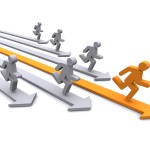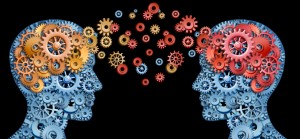 We thought it might be interesting to share the attributes valued by many senior leaders in our network. We hope you find inspiration and an insight or two from their words.
We thought it might be interesting to share the attributes valued by many senior leaders in our network. We hope you find inspiration and an insight or two from their words.
Accountable – he/she is accountable for what gets done and doesn’t get done. He/she also holds others accountable.
Ability to “guide” it could be anything: ability to lead, ability to control emotions, ability hire good people, etc
Ability to recognize talent in others
Blend your staff. As a leader, you must build your staffs at almost every level to include people with varied viewpoints, talents, and inclinations. If you build your staff trying to select only those in your image, you will find yourself or your team with all common faults and blindsided by issues that neither you or your team members ever saw coming.
Building a Great Team– Team building is not the easiest thing to accomplish. Great managers are really measured in their ability to build great teams. For a team to perform efficiently, their leader should be able to motivate his/her team.
Coach – a good leader is a coach and knows he is teaching people to fish – the more questions he/she asks the more he teaches people to think.
Curious – great leaders are insanely curious. They are curious about everything: what’s happening with market, competitor movement, etc.
Decision- Making and Problem Solving are necessary skills. A leader needs to be able to recognize problems and issues and figure out the best approach to resolve the issues and move his team forward.
Direction- Leaders not only show the path, but are able to dive in and solve for challenges along the journey!
Enablement- Strong leaders trust their people and work hard to ensure their teams have what they need to succeed, and clear the hurdles out of their way.
From the Front-Lead from the front, live it, breathe it!
Goal Oriented-Leaders should also have a visionary sight for the benefit of the company. He/she should plan the future steps for the growth his/her team and of the company.
Gratitude–Thanksgiving does not happen just once a year. Even the weakest rower in a race keeps the boat balanced, keeps the rhythm, and enables the strongest rowers to pull ahead. Thank every member of your team for their contribution. Make it personal. Make it sincere. There is always another race, and you will need all those rowers.
Humility- to recognize self-limitations
Integrity- have integrity & strong values: know who you are.
Innovation- if you are not thinking about what is next, you will not be unique for customers so you will not grow and it will be hard to take care of your people.
Knowledge- a great leader is aware of changes that are occurring in their industry, aware of innovations in their firm and in their competitors. This is necessary so that he/she can use the knowledge and make positive contributions to the goal.
Leading by example is highly underrated! Work daily habits, words chosen, reactions to problems, ability to absorb criticism, listening to your people and praising good performance must be a day-to-day activity.
Life-Keep Life in Perspective– Work / Life Balance……………….Have fun!!
Look-Great leaders look forward and look outward.
Market- You have to be always taking market share so you need to show your competitors and your customers. You have to drive what makes you unique so customers want to buy from you and not your competitors.
Measure– Leaders understand where the goal line is, communicate it to their teams, and how to work towards that goal. Without clarity in what the objective is, individuals will be confused on the goal and have different views of success.
Mentor– Seek wise counsel– know who has an interest in YOU.
Numbers– Business is about making money so a strong leader has to understand the activities that are going to drive growth and keep the costs down.
Open Mind– knows he/she doesn’t know everything. Seeks out diverse points of view – encourages health debate on topics.
Outcomes– never mistake action for outcomes. Nothing is more de-motivating than have a team working hard and not getting the results. Guide them towards the right target so the action matches the expected outcome.
Overwhelm- Overwhelm problems before they overwhelm you.
People selection and skills matching to them to specific positions is key to attaining the desired results. Running anything as a leader requires organizational balance. As an example, having a great sales leader run marketing, sounds like an organizational fit many times, but it rarely is a fit. Those are two different skill sets. As you think this out, it applies in many situations as you select, place and grow talent.
Positive– If a leader doesn’t espouse positivity, no one else will. It’s never more evident than right now. It is surprising to me how hard this is for some people.
Road less traveled– Fix /Build /Grow Something. Take the road less traveled–take risk & build skills not titles.
Student– Leaders are always learning and evolving. For what it is worth, I spend 4 – 5 hours a week on my own education / development.
Take care of your people
Visibility- For a team to be successful, their leader needs to bring visibility to the team of how / why each member of the team is there. What skills, experience, or knowledge do they bring to the team?
Visionary- has a sense of where the organization is going and can articulate it
We- Leadership is about advancing others, not you. Good leaders often always use the term “We” instead of “I”.
Zeal- Leaders have to be the most energetic, focused, determined people on the team because everyone else will draw on that.
Many thanks to all of the leaders who contributed to this blog for their time and wisdom. Hopefully we have added to your perspective on leadership. If you would like to share a thought or two for a follow-up post, please let me know.
Thank you,
Larry Janis, Managing Partner, ISSG E-janis@issg.net
 We’re midway through 2020, and suffice to say, the year hasn’t gotten off to a great start. But as we look ahead to the next two quarters, leaders across every sector know that while the immediate crises may have abated, the tough work remains to be done.
We’re midway through 2020, and suffice to say, the year hasn’t gotten off to a great start. But as we look ahead to the next two quarters, leaders across every sector know that while the immediate crises may have abated, the tough work remains to be done.




 by Kate Cooper
by Kate Cooper Mike Ettling is a CEO, Investor, builder of world-class teams, champion of diversity and continuous learner, and is passionate about people. From his first leadership role in the Boy Scouts, to exec positions in the tech industry, his career has revolved around elevating, engaging and enabling people.Mike joined Unit4 to get the market as excited in its unique approach to enterprise tech as he is. Unit4 is focused on building systems that change how people experience work. We’re building systems that change how people experience work, and the impact in the future will be huge. Outside of work Mike is a family man, a Liverpool supporter, and a proud South African.
Mike Ettling is a CEO, Investor, builder of world-class teams, champion of diversity and continuous learner, and is passionate about people. From his first leadership role in the Boy Scouts, to exec positions in the tech industry, his career has revolved around elevating, engaging and enabling people.Mike joined Unit4 to get the market as excited in its unique approach to enterprise tech as he is. Unit4 is focused on building systems that change how people experience work. We’re building systems that change how people experience work, and the impact in the future will be huge. Outside of work Mike is a family man, a Liverpool supporter, and a proud South African. We thought it might be interesting to share the attributes valued by many senior leaders in our network. We hope you find inspiration and an insight or two from their words.
We thought it might be interesting to share the attributes valued by many senior leaders in our network. We hope you find inspiration and an insight or two from their words. Bernard Marr
Bernard Marr